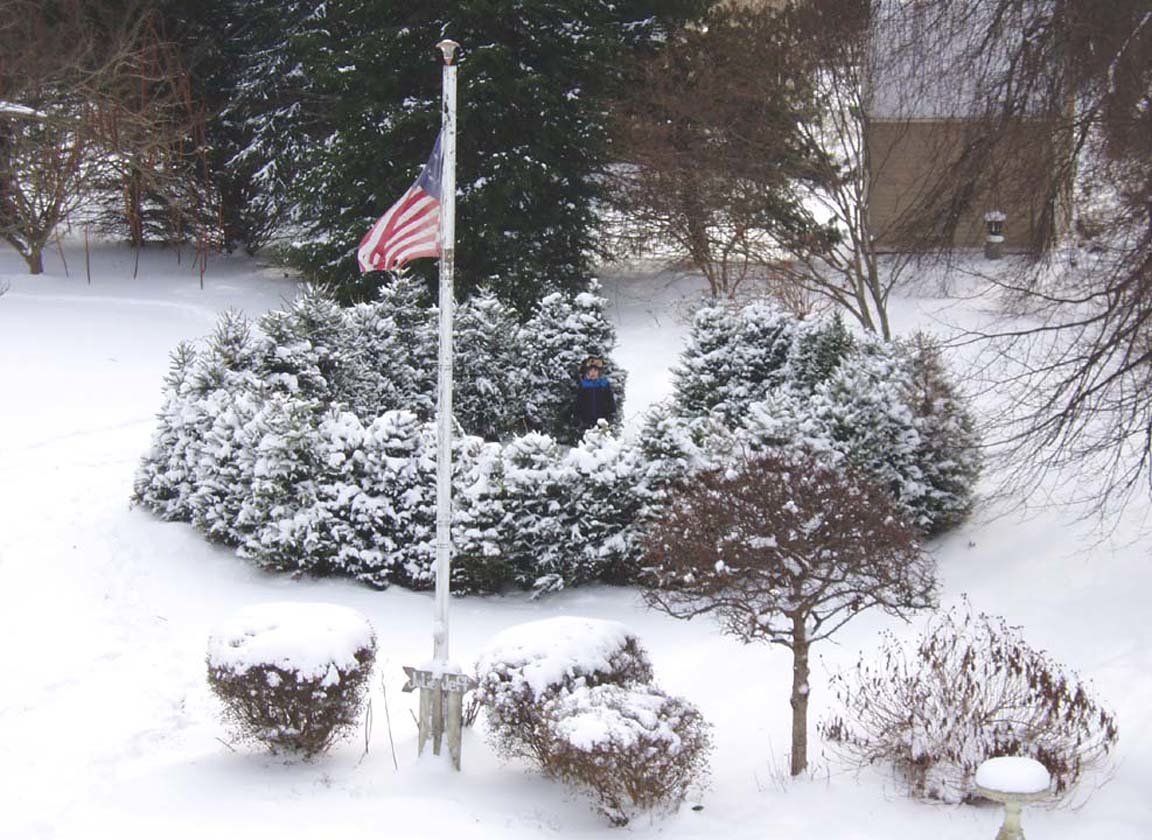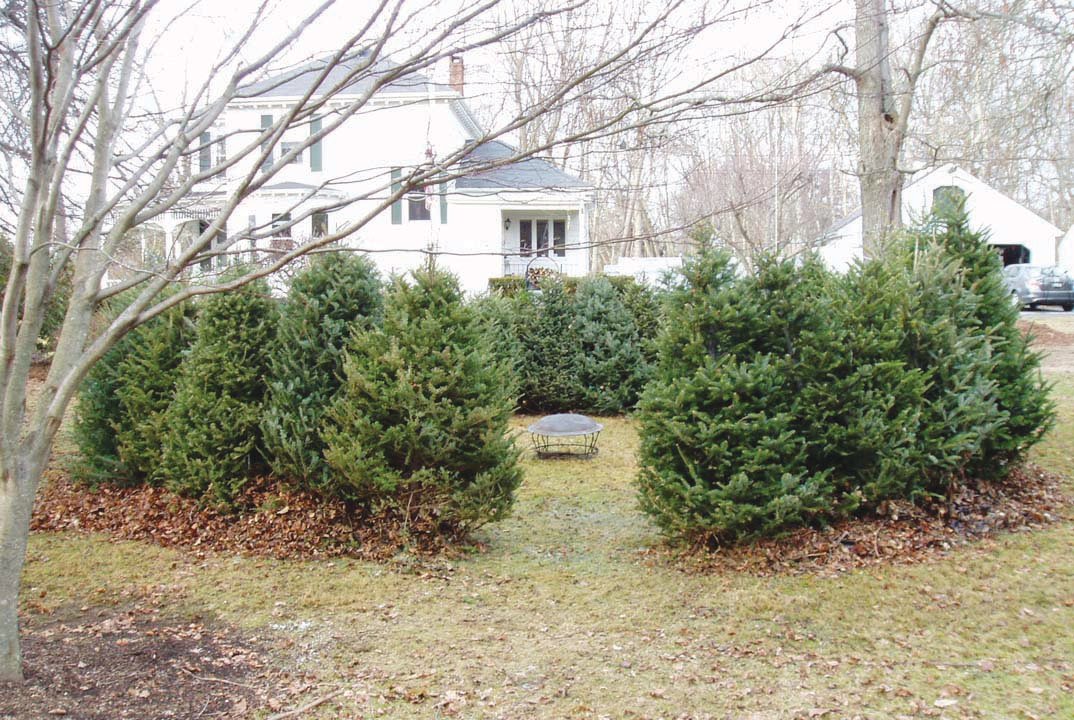Pinehenge 2019 — The gathering of the tired Christmas trees
If your Christmas tree mysteriously disappeared overnight from the sidewalk in front of your home in January, I confess I am likely responsible. For the past six years I have been rescuing discarded …
This item is available in full to subscribers.
Please log in to continue |
Register to post eventsIf you'd like to post an event to our calendar, you can create a free account by clicking here. Note that free accounts do not have access to our subscriber-only content. |
Day pass subscribers
Are you a day pass subscriber who needs to log in? Click here to continue.
Pinehenge 2019 — The gathering of the tired Christmas trees
If your Christmas tree mysteriously disappeared overnight from the sidewalk in front of your home in January, I confess I am likely responsible. For the past six years I have been rescuing discarded Christmas trees in Bristol before the compost truck makes its rounds.
The inspiration is my dislike for the depths of winter. In late 2013 I determined to do something to make those bleak, cold days more stimulating. My solution was the construction of the first “Pinehenge,” now a personal, if not family, tradition.
Pinehenge consists of a large ring — 20 feet in diameter — of Christmas trees placed on stakes with lights strung across the top, creating an aromatic, enclosed space. Entered through a gap between two trees, Pinehenge is best enjoyed on a starry night when its atmosphere can make one feel somewhere far away. When it snows, the experience becomes magical. Both a quirky landscape feature and play zone for my son and his friends, Pinehenge has also served as a setting for mid-winter parties.
For years I had been saddened to see beautiful Christmas trees lying at curbside in January, awaiting a funereal ride to the chipper. I thought I could come up with a purpose for those trees, and Pinehenge is the result.
In Pinehenge’s first year, 2014, I decided to collect trees after midnight to avoid unwanted attention. I used my wife’s Toyota Rav 4 and found I could strap three trees on top and accommodate two inside. The resulting bonanza of needles didn’t make me popular with my wife, though the fragrance circumvented the need for air freshener. I found it a pleasure to take in the peacefulness of Bristol on those frosty collection nights.
Eventually I discovered a more convenient and physically less taxing solution by putting a bike rack on the back of my Honda Accord. It was easy to stick one tree sideways onto the extended pipes with a second tree placed between the rear window and impaled tree. Driving at low speeds allowed me to get multiple loads home safely in the course of a night.
I have yet to be stopped by authorities while collecting trees, though I got caught by a curious resident once. “What are you going to do with it?” was the startling question from out of the dark. I explained to a lady on a porch that I had a project in my yard and her tree would find further appreciation there. I provided my address and encouraged her to stop by. She was satisfied with my story and eventually did visit — to her delight.
Occasionally trees come with ornaments. I have a collection hanging in my garage that includes an infamous Christmas pickle, as well as a sterling silver snowflake with a date of 1972. This year, one tree yielded a wonderfully preserved bird’s nest. Some come with price tags attached.
Years of experience have taught me where I am likely to find the best trees. Certain homes annually yield healthy, well-cared for trees or particularly tall ones. One friend proudly contributes the tallest tree every year thanks to his family’s two-story living room. Throughout January it’s not uncommon to come home to several trees dropped off in my driveway, donations from friends familiar with Pinehenge.
In the past two years, when nightly pickups and donations have fallen short, I’ve visited the town landfill to make withdrawals from the Christmas tree pile. When I first asked permission to do this, I was met with skepticism at the entrance shack. Now I get a wave and smile as I head in for a green specimen or two.
Getting trees to stand up turned out to be the biggest challenge early on. My initial strategy of using Christmas tree bases proved impractical. Windy conditions or heavy snow left trees lying scattered with no aesthetic merit. I resorted to pounding oak stakes and metal pipes into the tundra and using zip straps to secure the trees. This worked. The staked trees are set about 3 feet apart at the base, allowing “filler” trees to be jammed between them, taking advantage of a velcro effect between branches.
In previous years, I lit the top of the ring with white Christmas lights plugged into an extension cord. This year is the first when I’ve rigged solar lights, making the display naturally independent, which seems appropriate.
During snowier winters, I’ve been able to place a fire pit in the center of Pinehenge with confidence that a modest fire wouldn’t become a blazing inferno detectable from the International Space Station. On these occasions, I take the precaution of wetting the trees with a garden sprayer, keeping it handy in the event of ambitious sparks. With safeties in place, it is wonderful to enjoy a campfire within Pinehenge.
Last year a windy storm in February wrecked most of Pinehenge before I was ready to give it up. I salvaged a section, remounted a few trees to form a much tighter circle and threw planks over the top to frame a roof. Remaining trees were placed on top, creating the first “Pinehut.” This winter, a skilled friend helped create a roomier, more formal roofed construction employing my son’s geodesic jungle gym. This edifice has been dubbed “Pinehouse” and is also solar lit.
I perceive a spiritual quality in Pinehenge when I consider what scenes the trees may have witnessed at holiday time. Some may have been present for someone’s first Christmas, or last, or the same milestones for a couple. Seeing a photo of my son within the original Pinehenge, a friend interpreted the ring as a hug from my recently passed father, a man who would have loved seeing what those abandoned trees had become.
Pinehenge usually stands into early March, when excessive browning signals the time for dismantling. I then drag the trees to the edge of our yard, where they await stripping of branches. Bare trunks are then stacked, ultimately becoming giant Lincoln Logs for my son or fuel for outdoor fires.
Pinehenge is admittedly unnecessary. It’s also a misnomer, since most of the trees are actually spruce. However, it has played its role in revolutionizing my view of winter, giving me a happy reason to be creatively employed outdoors. I also feel good knowing that those trees have a chance to show their beauty a little longer, potentially creating a memory for my son that will one day leave him nostalgically reflecting on how weird his dad really was.









